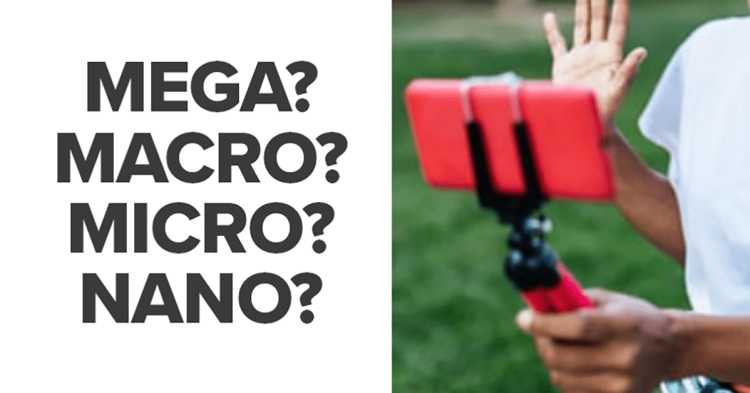In the world of social media marketing, influencers have become an integral part of brand promotion. As influencer marketing becomes more popular, companies are searching for relevant brand ambassadors who may not have as large a following as mega-influencers. Micro-influencers have emerged as a sweet spot in digital marketing.

With a growing number of followers and an engaged audience, influencers are an effective way for businesses to reach their target demographic. However, not all influencers are created equal.
However, the prevalence of influencers on social media has led to the need for categorizing them into tiers. The fact that anyone can now be an influencer has both positive and negative implications, depending on how you look at it.
Types Of Influencers

Mega Influencers
Mega influencers are typically well-known public figures with a massive following, often in the millions. These influencers have a strong presence in the mainstream media and are often household names. Due to their large following and high profile, they command high fees for their brand endorsements.
Macro Influencers
Macro influencers have a following of between 100,000 to 1 million people. They are known for their niche content and have a highly engaged following. Macro influencers are often considered experts in their field and have built their following by consistently creating valuable content. They are also highly sought after by brands due to their engaged audience.
Micro Influencers
Micro influencers typically have a following of between 10,000 to 100,000 people. They have a highly engaged following, often with a specific niche or interest group. Micro influencers have built their following by consistently creating content that is valuable to their audience. They have a strong connection with their followers, often responding to comments and messages, making them a highly trusted source of recommendations.
Nano Influencers
Nano influencers have a following of under 10,000 people. They are highly focused on a specific niche or interest group, and their followers are highly engaged. Nano influencers are often seen as experts in their field, and their followers trust their recommendations. Due to their smaller following, they have a highly personalized approach to content creation, often creating content that resonates with their audience on a personal level.
Wrap Up
In conclusion, influencer marketing can be an effective way for businesses to reach their target audience. However, it’s essential to understand the different types of influencers and their characteristics to make informed decisions about which influencers to work with. Mega influencers have a massive following but come with a hefty price tag, while micro and nano influencers have highly engaged audiences with a strong connection to their followers. Ultimately, the choice of which type of influencer to work with depends on the goals and budget of the brand.
















